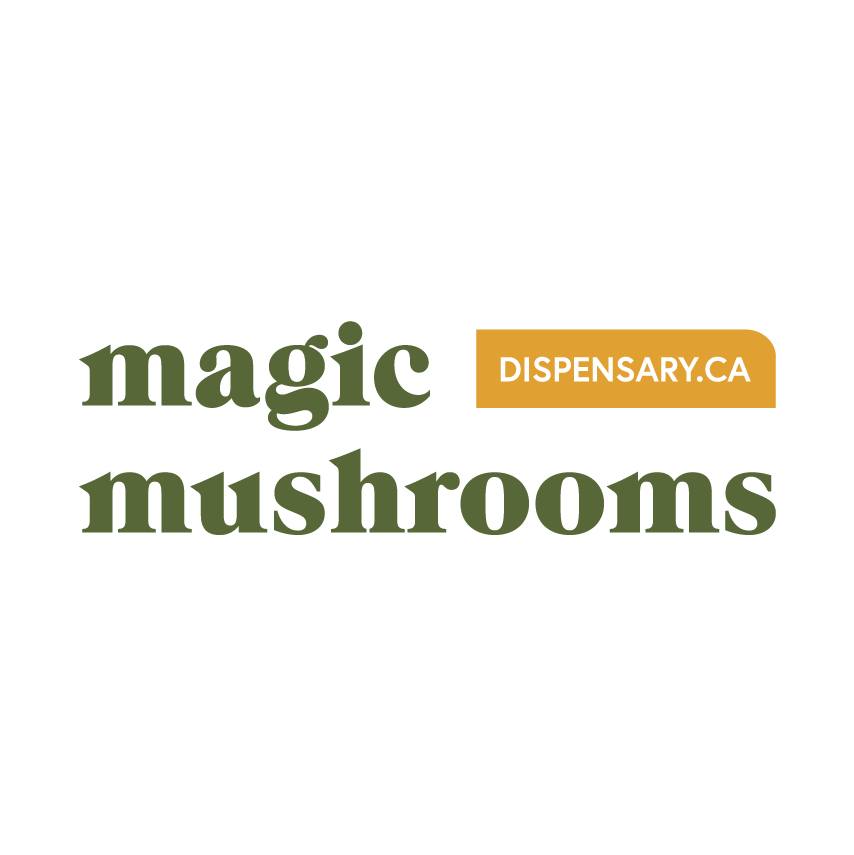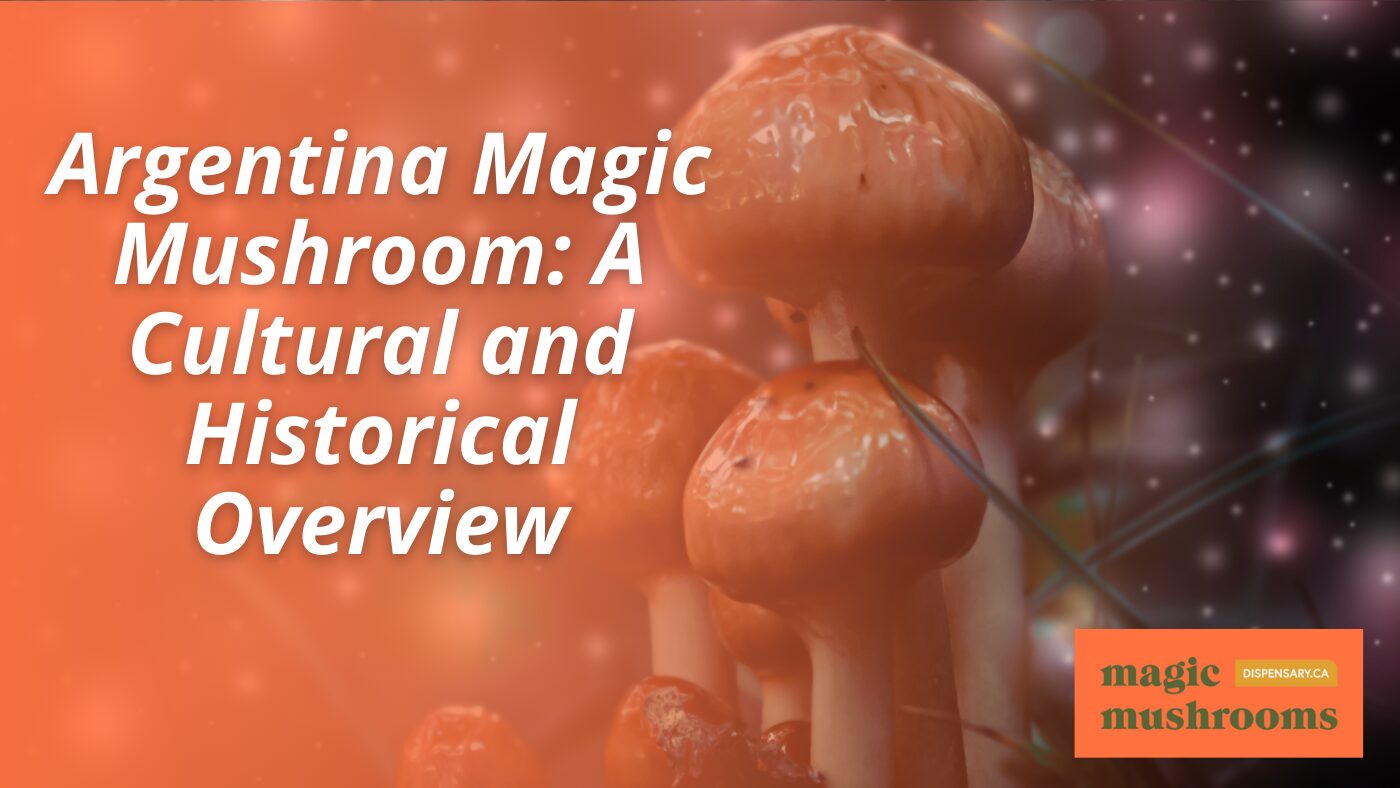In Argentina, psychedelic mushrooms hold a historical importance, predominantly utilized by native groups for their spiritual and medicinal ceremonies. Employing mushrooms that contain psilocybin has aided in promoting spiritual development and mental health, connecting individuals to elevated levels of awareness. Ongoing archaeological and ethnobotanical studies shed light on the profound nature of these old traditions in Argentine society. Recent research highlights their therapeutic possibilities, suggesting novel approaches to mental health treatment. Despite legal restrictions, the cultural veneration of these mushrooms endures, playing a role in legislative changes and efforts to preserve them. Exploring this extensive history unveils the continuing significance of psychedelic mushrooms in the cultural and spiritual dimensions of life in Argentina.
Key Takeaways
- Indigenous groups in Argentina have used magic mushrooms in spiritual and healing rituals for centuries.
- Archaeological findings and ethnobotanical studies support the historical use of these psychoactive mushrooms in religious and social gatherings.
- Magic mushrooms are revered as sacred tools for achieving spiritual communion and accessing higher states of consciousness in traditional ceremonies.
- Despite their cultural significance, the possession, cultivation, and sale of magic mushrooms remain illegal in Argentina.
- Modern advocacy efforts in Argentina focus on decriminalization and recognizing the therapeutic potential of psilocybin from these mushrooms.
Early Indigenous Uses
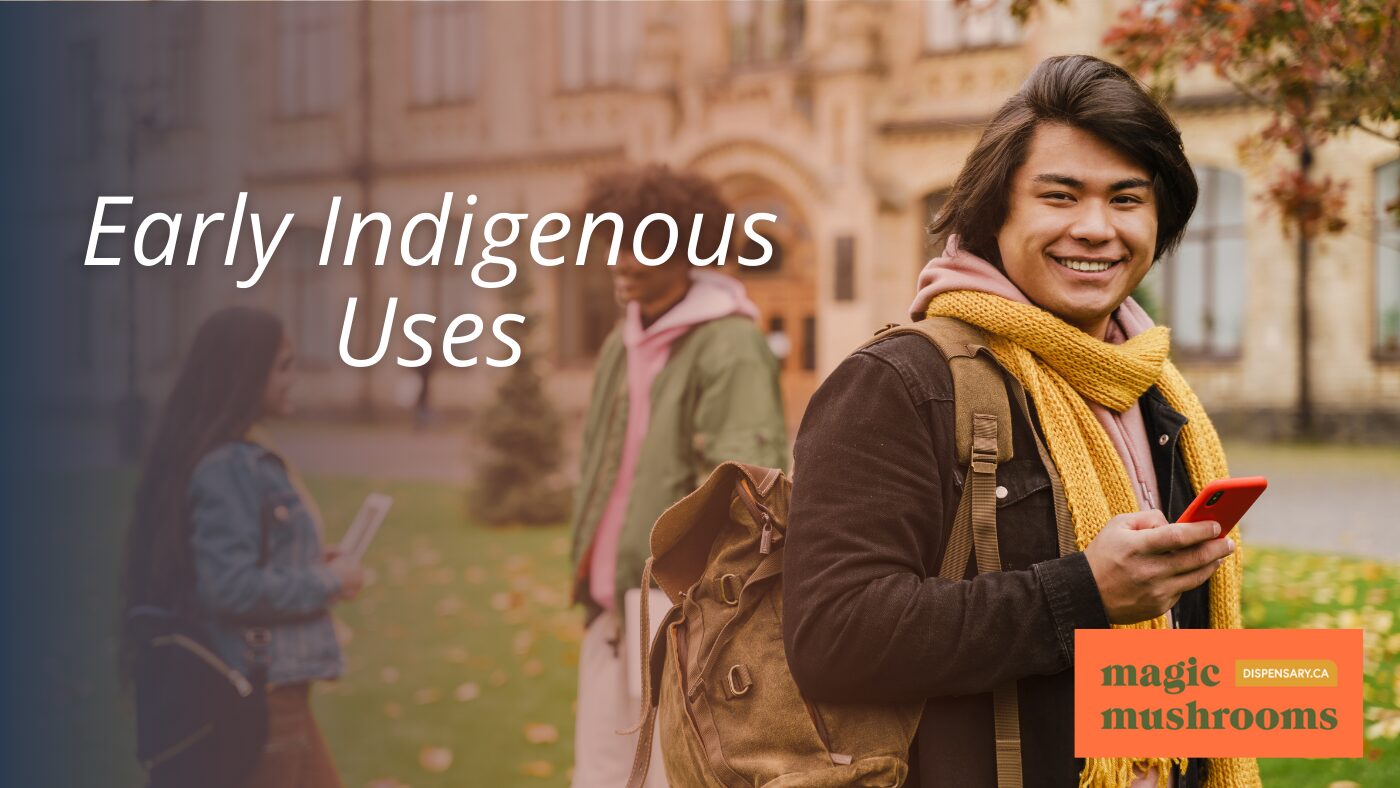
Indigenous groups in Argentina have historically utilized magic mushrooms in spiritual and healing rituals, as documented in ethnobotanical studies and evidenced by archaeological findings. These practices, deeply embedded in the cultural fabric of various communities, reflect a profound relationship with nature and the spiritual world. The use of these psilocybin-containing fungi dates back to ancient times when they were integral to ceremonies designed to facilitate communication with the spiritual sphere and promote physical and emotional healing.
The significance of these mushrooms can also be observed in the linguistic heritage of Argentina’s indigenous populations. Several native languages have specific terms for these psychoactive mushrooms, underscoring their importance in traditional practices and the everyday life of these communities. This linguistic evidence supports the notion that the use of magic mushrooms was not merely incidental but a well-established cultural practice.
Archaeological discoveries further substantiate the historical use of magic mushrooms among indigenous groups in Argentina. Artifacts and ceremonial sites suggest that these practices were widespread and significant in religious and social gatherings. The continuity and adaptations of these rituals can be traced through generations, indicating a sustained value placed on the mushrooms’ psychoactive properties.
Ongoing ethnobotanical research has enriched the contemporary understanding of these ancient practices, which explores the cultural, medicinal, and spiritual implications of magic mushroom use. This research highlights the historical depth of indigenous knowledge systems and opens avenues for exploring the potential benefits of these traditional practices in modern contexts.
Psychedelic Properties Explained
Understanding the biochemical mechanisms of magic mushrooms reveals why they have been valued in spiritual and healing practices. The essential compounds responsible for their psychedelic properties are psilocybin and psilocin. These substances belong to a class of chemicals known as tryptamines, which structurally mimic serotonin, a neurotransmitter essential for mood, cognition, and perception. When ingested, psilocybin is metabolized into psilocin, which crosses the blood-brain barrier and binds to serotonin receptors, particularly the 5-HT2A receptor. This interaction disrupts standard serotonin transmission, leading to altered sensory experiences and perceptions, commonly referred to as hallucinations.
The majority of research on the psychedelic properties of magic mushrooms has focused on the Panaeolus species, which are known to contain varying concentrations of psilocybin and psilocin. However, only 20 out of 77 sequenced species in the Panaeolus genus have had their internal transcribed spacer (ITS) sequences identified, indicating a significant gap in our understanding of their genetic diversity and biochemical potential. This lack of consistent data on the presence of psychoactive compounds in these mushrooms underscores the need for more rigorous and systematic research.
The growing interest from pharmaceutical companies in the medicinal applications of psychedelic fungi is promising. As research continues to evolve, there is potential for developing new therapeutic protocols that harness the unique properties of these fungi. Understanding their biochemical behavior deepens our appreciation of their role in traditional cultures and opens new avenues for modern medical and psychological treatments.
Spiritual Significance
Magic mushrooms hold profound spiritual importance in Argentina, where they have been integral to ceremonial practices for centuries. Indigenous communities historically have revered these fungi not just for their hallucinogenic properties but as sacred tools that provide a bridge to the spiritual world. These mushrooms are seen as a means to commune with ancestors, facilitating a deeper understanding of oneself and the universe.
The spiritual significance of magic mushrooms in Argentina is deeply rooted in the belief that they enable individuals to access higher states of consciousness. This access is essential for spiritual growth and healing, allowing users to transcend the physical world and engage with metaphysical energies. This practice underscores the holistic view of health prevalent among Indigenous cultures, where spiritual well-being is inseparable from physical and mental health.
Throughout Argentina’s history, these sacred mushrooms have been part of a broader cultural tapestry that values the interconnectedness of life. This perspective is reflected in how these communities approach the natural world, viewing it as a living entity that is both part and protector of spiritual identity. Hence, using magic mushrooms is not merely about experiencing visions but about fostering a profound connection with nature and its ancient wisdom.
Today, as global interest in the therapeutic potential of psychedelics grows, so does the attention to the spiritual dimensions of magic mushrooms in Argentina. This renewed interest helps preserve and respect the traditional practices, ensuring that the spiritual heritage associated with these mushrooms continues to thrive alongside modern scientific exploration.
Rituals and Ceremonies

Numerous sacred rituals and ceremonies in Argentina incorporate magic mushrooms, reflecting a long-standing tradition deeply rooted in cultural heritage and spirituality. These practices are not only a means to facilitate profound spiritual experiences but also serve as essential elements in the cultural fabric of Indigenous communities. Throughout generations, these rituals have fostered a deep connection between the participants and the natural world, emphasizing the mushrooms’ role as mediators between the physical and spiritual domains.
Indigenous groups in Argentina have historically used magic mushrooms during ceremonies designed to invoke spiritual guidance, heal the sick, and mark significant communal events. The rituals often involve seasoned shamans or healers administering mushrooms in controlled, sacred environments. This careful stewardship ensures that the profound effects of the mushrooms are experienced in a manner that benefits and protects all participants, aligning with the community’s spiritual and health needs.
These richly layered ceremonies integrate chants, dances, and elaborate symbolic acts that enhance the communal experience. Participants may seek personal enlightenment, communal bonding, or ancestral communion, viewing the mushrooms as a sacred tool to open spiritual pathways.
The enduring practice of these mushroom rituals highlights their significance as a spiritual tradition and as a cornerstone of cultural identity for many indigenous Argentinians. Through these ceremonies, communities maintain a vital link to their ancestors, reinforcing their cultural heritage and spiritual beliefs amidst the changing dynamics of the modern world.
Colonization Impacts
The colonization of Argentina profoundly disrupted the indigenous practices involving magic mushrooms, leading to significant cultural losses. As Spanish colonizers imposed their own cultural norms and religious beliefs, the traditional use of these hallucinogenic fungi, deeply embedded in local spiritual and medicinal practices, was largely suppressed. The indigenous communities, who had harnessed the properties of these plants for centuries in sacred ceremonies and healing rituals, faced severe penalties for continuing their ancestral customs. This resulted in a decline in the transmission of knowledge about using magic mushrooms among native populations.
These colonial efforts were not merely incidental but part of a broader strategy to control and assimilate indigenous peoples into the Spanish colonial empire. By undermining indigenous practices, colonizers aimed to eradicate cultural identities and replace them with European ideologies. The suppression of magic mushroom use is a poignant example of this cultural imperialism. It stripped away an essential element of indigenous spirituality and medicine, further alienating the native people from their heritage.
The impact of colonization on the use and knowledge of magic mushrooms in Argentina has left a lasting legacy that extends to modern times. Much of the traditional knowledge has been lost, and only fragments remain, often cloaked in secrecy and passed down through fewer and fewer lines of transmission. The resurgence of interest in these practices is challenged by the scarcity of intact traditions, making the revival and preservation efforts both critical and challenging. This historical narrative underscores the broader consequences of colonization on indigenous cultural practices and highlights the need for a careful and respectful approach to reviving and sustaining these ancient wisdoms.
Types Found in Argentina
Argentina hosts a variety of psilocybin-containing fungi, including the notable Psilocybe cubensis and Psilocybe azurescens, which play a significant role in its cultural and historical landscape. These species are among the most recognized and widely studied due to their distinctive psychotropic properties and regional prevalence. Psilocybe cubensis, often called the golden cap mushroom, is particularly famed for its relatively large size and golden-colored caps. This mushroom thrives in humid grasslands and has been found in various Argentine provinces, making it accessible for scientific study and traditional use.
Similarly, Psilocybe azurescens stands out due to its high potency and striking blue coloration in response to physical handling or damage. Though less common than Psilocybe cubensis, its presence in Argentina adds to the ecological and ethnomycological diversity of the region. The potency of Psilocybe azurescens makes it a significant subject of interest for researchers and those who use these mushrooms for ceremonial purposes.
The distribution of these mushrooms in Argentina is not uniform, with specific ecological conditions favoring different species. This habitat variation affects their availability and influences the cultural practices associated with their use. Research into these species has helped illuminate Argentina’s rich mycological biodiversity and underscored the importance of preserving these natural resources.
Understanding the variety and characteristics of the magic mushrooms in Argentina is vital for appreciating their role in the country’s cultural fabric and historical narratives. Their continued study promises to enrich our knowledge of the natural world and the intricate ways human cultures interact with it.
Ethnobotanical Perspectives
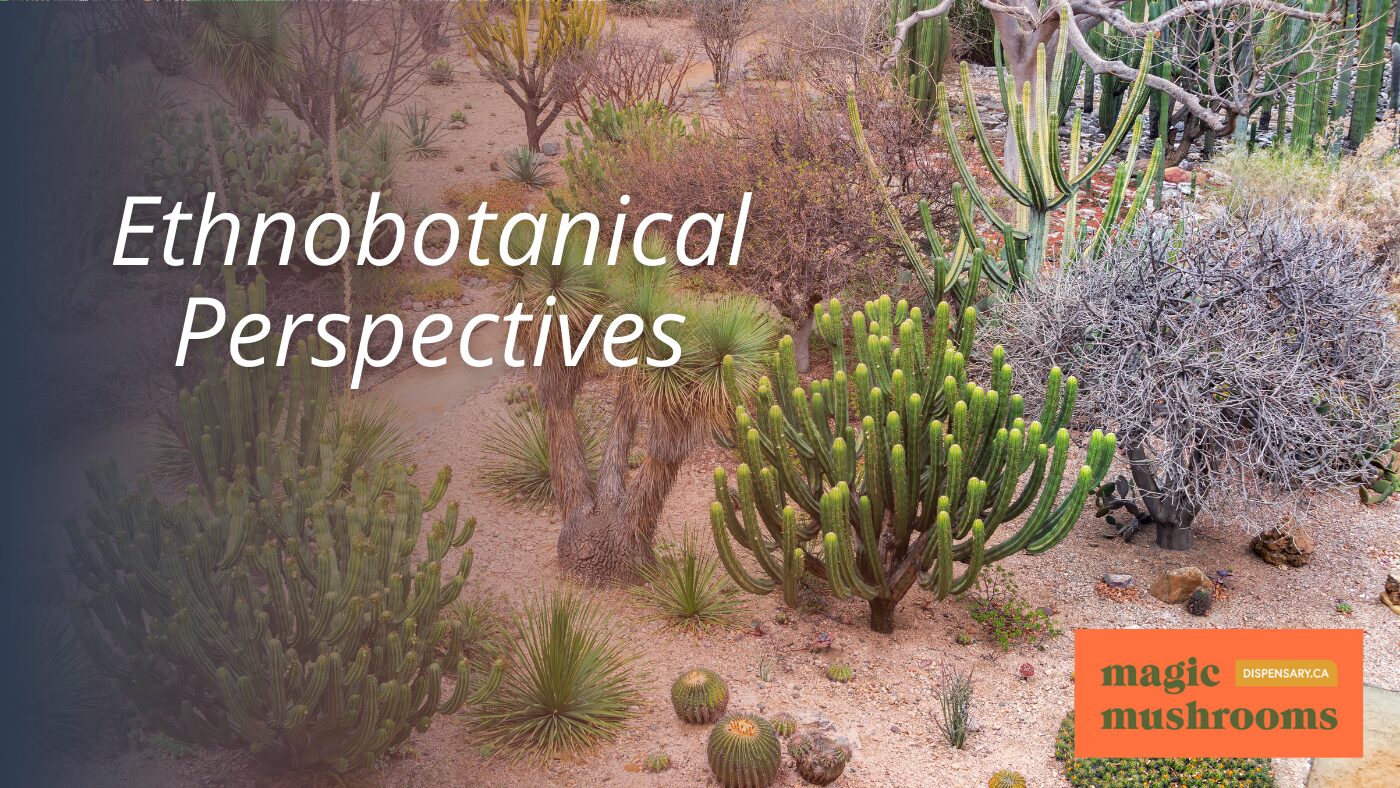
Exploring the ethnobotanical perspectives reveals that indigenous groups in Argentina have long utilized magic mushrooms in their cultural and spiritual practices. This traditional use is deeply embedded in their rituals and ceremonies, reflecting an intricate relationship with nature and spirituality. Ethnobotanical research highlights how these practices, while varied among different tribes, consistently demonstrate a profound understanding and respect for the psychoactive properties of these fungi.
Argentina’s diverse ecosystems, ranging from lush forests to arid plains, provide an abundant habitat for various species of magic mushrooms. This ecological variety supports a rich field of study for both local and international researchers aiming to understand the significance of these organisms within indigenous cultures. Such studies document the types of mushrooms used and explore how the knowledge of their applications is transmitted across generations.
The transmission of this traditional knowledge is primarily oral, with elders passing down information to younger community members. This process maintains the continuity of cultural practices and preserves the sacred relationship between the people and their environment. Additionally, this ethnobotanical knowledge provides a framework through which the community interprets its history and identity.
The insights gained from examining the ethnobotanical perspectives on magic mushrooms in Argentina are essential. They contribute to the broader anthropological understanding of indigenous uses of natural resources and highlight Argentina’s cultural richness and biodiversity. This knowledge is vital to fostering a greater appreciation and respect for traditional practices and their roles in contemporary society.
Legal Status Overview
Despite the rich ethnobotanical heritage involving magic mushrooms, their possession, cultivation, and sale remain illegal in Argentina. The country’s stringent laws reflect a broader stance that does not distinguish between types of psychedelic fungi, treating all psilocybin-containing mushrooms under the same legal framework. This classification means that any activities related to these mushrooms, including their distribution or personal use, are subject to legal penalties.
Argentina’s legal system does not provide allowances for the recreational or medicinal use of magic mushrooms, aligning with broader international trends of prohibition. The lack of specific decriminalization policies further complicates the legal landscape, placing potential users and researchers in a precarious position. Individuals found with these substances face possible legal consequences, ranging from fines to imprisonment, depending on the severity of the offense.
The firm legal stance is at odds with the historical and cultural significance of magic mushrooms within specific indigenous communities in Argentina. These communities have historically used psilocybin mushrooms in spiritual and healing practices. However, contemporary laws do not accommodate these traditional uses, creating a disconnect between cultural heritage and national drug policies.
This rigid legal framework limits the ability to research the potential therapeutic benefits of psilocybin, which is increasingly recognized globally. Several countries are reevaluating their stance on psychedelics, driven by scientific studies suggesting benefits in treating conditions such as depression and PTSD. Argentina’s current legal status on magic mushrooms remains a significant barrier to exploring these potential medicinal uses within a scientific or clinical context.
Contemporary Uses
Contemporary practices involving magic mushrooms in Argentina meld age-old indigenous traditions with burgeoning scientific inquiry, reflecting a deep-rooted cultural heritage alongside modern therapeutic potential. Indigenous communities have long used these fungi in rituals integral to their cultural and spiritual life. These practices passed down through generations, involve the use of magic mushrooms to achieve states of altered consciousness, believed to facilitate communication with the spiritual world and promote healing.
In modern times, this traditional use coexists with a growing interest among non-indigenous Argentinians, who are increasingly drawn to the potential personal and psychological benefits of these experiences. This cultural integration is conducted with respect for the mushrooms’ traditional roots, often involving ceremonies led by experienced Indigenous or trained leaders who guide participants through the psychotropic experience. These sessions are carefully managed to honor the mushrooms’ sacred nature and ensure all participants’ safety and well-being.
Furthermore, the collective interest in magic mushrooms extends beyond individual experiences, influencing contemporary Argentine culture in broader ways. Artistic expressions, from music to visual arts, draw inspiration from the altered states of consciousness induced by magic mushrooms. This has contributed to a vibrant subculture that respects the profound impact of these natural psychedelics on human perception and creativity.
Medical Research Advances

Advancements in medical research within Argentina have highlighted the significant therapeutic potential of psilocybin, the active compound in magic mushrooms, for treating various mental health disorders. Recent studies have focused on its effects on depression, anxiety, and post-traumatic stress disorder (PTSD), revealing its capacity to alleviate symptoms in ways traditional medications often fail to achieve. The transformative properties of psilocybin on perception, mood, and thought patterns are central to its therapeutic effects, offering a profound shift that can be pivotal for individuals with chronic symptoms.
The Argentine medical community, once skeptical, is increasingly supportive of the potential benefits of psilocybin and other psychedelics. The shift in perception is primarily driven by rigorous, controlled research studies demonstrating significant, lasting improvements in mental health outcomes. For instance, controlled trials have shown that a single administration of psilocybin can produce substantial and enduring reductions in depression and anxiety levels in patients with life-threatening cancer diagnoses, suggesting its role in alleviating existential distress.
Moreover, the broader implications of psilocybin research are contributing to a global reevaluation of how mental health can be treated. Argentina’s contributions to this field are not isolated but are part of an international dialogue redefining psychiatric care. Researchers are uncovering the therapeutic effects and exploring the underlying mechanisms that enable psilocybin to facilitate significant psychological change. This understanding is essential for developing targeted therapies that are both effective and have fewer side effects than many conventional treatments.
Cultural Revival Movements
In Argentina, cultural revival movements increasingly focus on reconnecting with indigenous traditions, including the ceremonial use of magic mushrooms. This resurgence is not merely a pivotal return to the past but a profound reclamation of ancestral wisdom and practices that have been marginalized for centuries. Indigenous communities are at the forefront, steering this revival to integrate traditional spiritual practices into contemporary life, thereby asserting their identity and rights.
The reintegration of magic mushrooms into ceremonial contexts is vital to these cultural revival movements. By doing so, communities honor their historical relationship with these natural elements, considered sacred and integral to their spiritual and cultural heritage. This practice leads to healing and understanding, bridging generations and reinforcing community bonds.
Moreover, the broader societal interest in these traditions has spurred a movement to preserve and document them, ensuring that the knowledge is retained and respected. This represents a collective effort to celebrate and protect an integral part of Argentina’s cultural heritage, fostering a better understanding and appreciation among the wider population.
This revival also challenges the prevailing narratives and offers a counterpoint to the dominant cultural influences, promoting a more inclusive national identity that acknowledges and values Argentina’s diverse cultural landscapes. Through festivals, workshops, and educational programs, the essence of these ancient practices is being kept alive, engaging both indigenous and non-indigenous Argentinians in a shared cultural dialogue. This movement revitalizes traditional ceremonies and strengthens the nation’s cultural fabric.
Shamanic Practices Today
Despite modern influences, shamanic practices involving magic mushrooms remain deeply rooted in Argentina’s indigenous communities. These ancient rituals, led by shamans, are integral to cultural preservation and spiritual health. Shamans, revered as mediators between the physical and spiritual worlds, facilitate ceremonies believed to heal, enlighten, and connect individuals to the natural world. The use of magic mushrooms in these ceremonies is not merely for their psychedelic effects but is deeply entwined with spiritual and communal healing.
The ceremonies are meticulously prepared, emphasizing the importance of setting and intention. They reflect a blend of ancient customs and adaptations to contemporary life. Participants engage in these rituals seeking clarity, healing from psychological or physical ailments, and spiritual guidance. The shaman’s role is essential as they guide the experience with chants, music, and sometimes other symbolic elements, creating an environment that supports introspection and transformation.
In these communities, magic mushrooms are more than just a substance; they are a sacred element representing a connection to ancestors and the earth. The rituals surrounding their use are complex and rich with symbolism, often involving prayers, fasting, and purification processes before ingestion. This careful spiritual practice highlights the mushrooms’ revered status and the profound respect the indigenous communities hold for their power.
These practices continue to thrive as essential components of Argentina’s cultural heritage. They represent a living tradition that has adapted over centuries yet retains the core principles of interconnectedness with nature and the spiritual world, underscoring the mushrooms’ enduring significance in Argentine shamanism.
Psychedelic Therapy
Psychedelic therapy in Argentina harnesses the potential of psilocybin to address various mental health issues, including anxiety, depression, and PTSD. This innovative form of treatment is grounded in increasing empirical evidence that suggests psychedelics can significantly reduce symptoms in patients for whom traditional therapies have been ineffective. Psilocybin, the active compound found in magic mushrooms, plays a pivotal role in these therapeutic practices, facilitating profound psychological insights and emotional release that contribute to healing.
The framework for psychedelic therapy in Argentina incorporates a carefully structured environment where safety and professional guidance are paramount. Trained therapists administer psilocybin in controlled doses, creating a setting that supports the patient throughout the psychedelic experience. This controlled setting is essential to secure the emotional and psychological safety of the participants, thereby enhancing the therapeutic outcomes.
Post-session integration is an essential component of the therapy process. After the initial psychedelic experience, patients undergo a series of integration sessions where they process their experiences with the guidance of their therapist. These sessions are critical for translating insights gained during the psychedelic experience into lasting psychological growth and personal change.
Research continues to support the effectiveness of psilocybin-assisted therapy, pointing to its potential to revolutionize the treatment of mental health disorders. In Argentina, as in many parts of the world, these findings are driving a renewed interest in psychedelic research and its applications in clinical psychology. This renaissance of psychedelic therapy represents a significant shift toward exploring non-traditional forms of treatment that prioritize holistic wellness and patient-centered care.
Global Influence
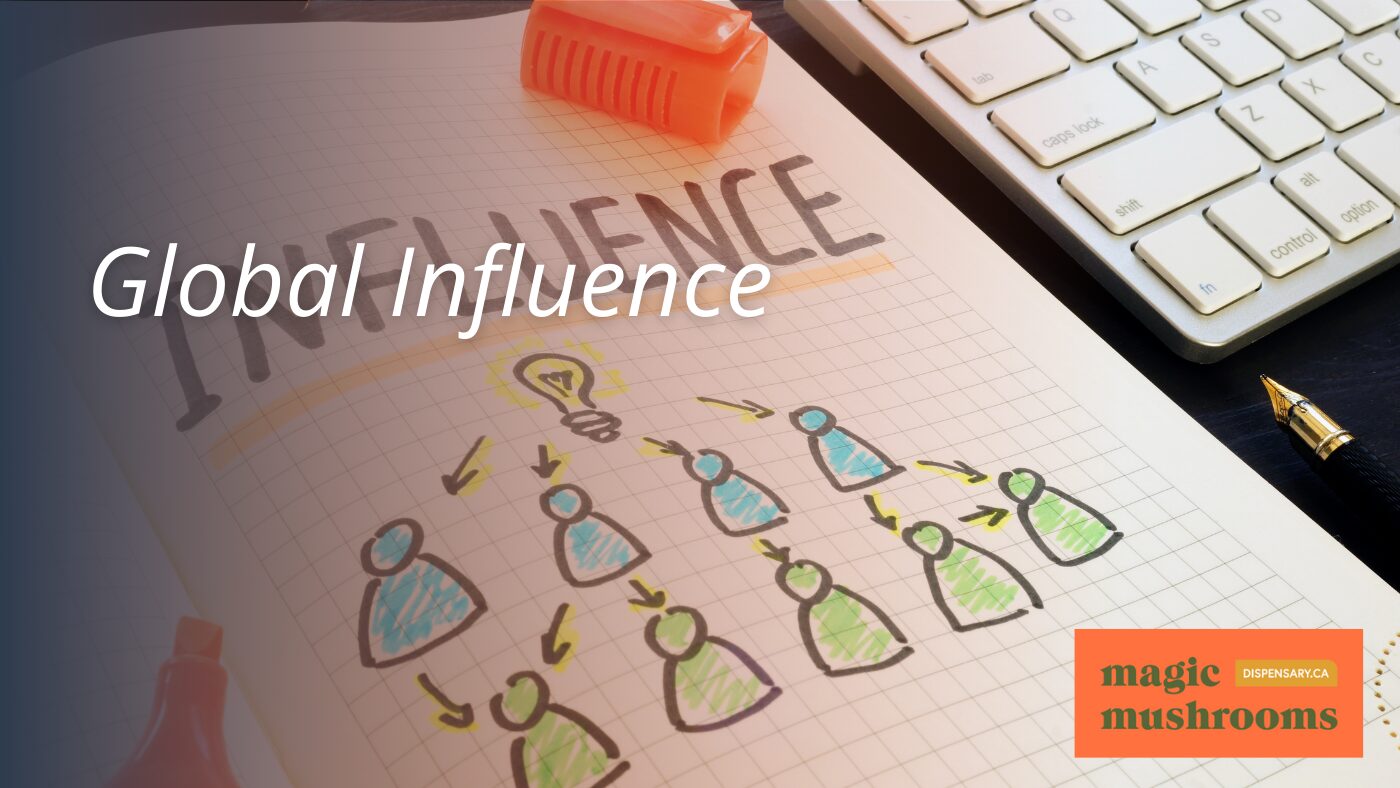
Argentina’s unique species diversity and historical significance in magic mushroom culture have garnered global attention and influence. This South American nation is wealthy in various psilocybin-containing s and holds a deep-rooted historical connection with these entheogens, tracing back to Indigenous rituals and ceremonies. The global psychedelic community, comprising researchers, historians, and enthusiasts, recognizes Argentina as a significant contributor to the broader understanding and appreciation of magic mushrooms.
The international interest in Argentine magic mushrooms stems partly from the Indigenous communities’ detailed documentation and study of their use in cultural and spiritual contexts. Such practices have provided a rich field for anthropological and ethnobotanical studies, positioning Argentina as a pivotal area of interest in global psychedelic research. This has led to increased academic collaborations and research initiatives that bridge Argentine researchers with international experts aiming to explore the potential therapeutic and spiritual benefits of psilocybin mushrooms.
Moreover, Argentina’s contribution to the global psychedelic dialogue extends beyond academia. The country’s historical and cultural narratives around magic mushrooms have influenced contemporary movements advocating for the decriminalization and therapeutic use of psychedelics. As these narratives travel, they enrich the global understanding of the cultural dimensions of psychedelic use, promoting a more nuanced appreciation of its benefits and challenges.
Through these contributions, Argentina continues shaping the global perspective on magic mushrooms, ensuring its unique heritage and ongoing research endeavors resonate within the wider psychedelic and scientific communities.
Conservation Efforts
Conservation efforts in Argentina are vital for safeguarding the diverse species of magic mushrooms and their natural habitats. With a rich biodiversity, these fungi play a significant role in the region’s ecological balance and cultural heritage. Addressing the threats posed by habitat destruction, pollution, and climate change is a top priority for conservationists. Initiatives are designed to protect these environments through a combination of on-ground conservation work and scientific research, aiming to understand better the ecological dynamics that sustain mushroom populations.
Research into the ecological importance of magic mushrooms underpins many of these conservation efforts. Scientists and ecologists actively study how these fungi interact with other plant and animal species, contributing to healthy ecosystems. This research is critical for developing effective conservation strategies that can be implemented across Argentina’s diverse landscapes.
Moreover, conservation programs in Argentina increasingly focus on community involvement. These initiatives aim to educate and engage local populations in preserving magic mushrooms, ensuring conservation efforts are sustainable and culturally sensitive. Collaborative projects bring together local communities, scientists, and government agencies, fostering a shared responsibility for the stewardship of these natural resources.
Preserving magic mushrooms in Argentina is about protecting a species and maintaining the cultural practices and traditional knowledge developed around their use. Argentina can safeguard these natural and cultural treasures through concerted conservation efforts for future generations. As these programs evolve, they continue highlighting the importance of an integrated approach that respects the biological and cultural significance of magic mushrooms.
Hunting and Identification
Indigenous communities in Argentina possess traditional knowledge essential for the proficient hunting and accurate identification of magic mushrooms. This knowledge passed down through generations, encompasses a deep understanding of the local ecosystems where these fungi thrive. Seasonal patterns, such as the onset of specific weather conditions, heavily influence the availability of these mushrooms, guiding indigenous hunters on when and where to look.
The identification process involves techniques and criteria deeply rooted in cultural practices and local folklore. Each magic mushroom species has distinct features, such as cap size, color, and the presence of certain textures, which are well-known among these communities. These characteristics are vital for distinguishing between psychoactive varieties and potentially harmful ones.
Moreover, the hunting and identifying of these mushrooms are not merely for collection but are part of a broader spiritual and cultural ritual. The mushrooms are collected respectfully, often accompanied by rituals that pay homage to the earth and its bounty. This respectful approach ensures sustainable harvesting, in line with the indigenous ethos of living in harmony with nature.
Local folklore also enriches the practice, with stories and myths about the origins and powers of magic mushrooms often intertwined with their hunting. These narratives provide a cultural context and embed a sense of responsibility and reverence for these natural resources.
Tourism and Economy
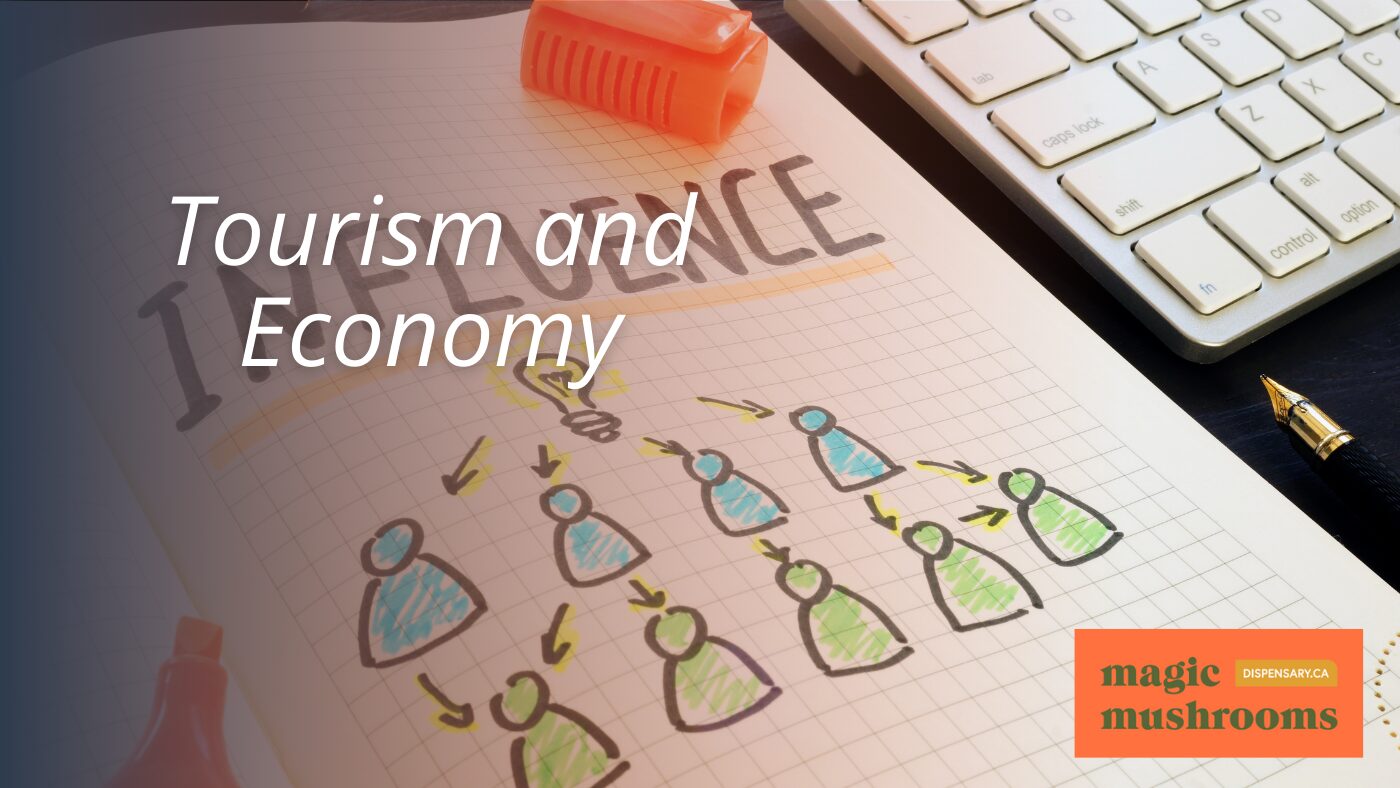
Notably, the tourism sector related to magic mushrooms plays a crucial role in boosting the local economies of several regions in Argentina. The allure of experiencing the psychoactive properties of these fungi draws curious visitors from around the globe. This influx of tourists contributes significantly to the economic activity in areas renowned for these natural resources, providing a valuable source of income and employment opportunities for local communities.
The cultural significance of magic mushrooms adds a unique dimension to the tourism industry in Argentina. Enthusiasts and scholars alike are attracted to the country not only for recreational experiences but also to gain deeper insights into the ancient traditions and practices involving these psychedelic substances. This interest has spurred the growth of local businesses, including guided tours, lodging, and dining establishments, all tailored to meet the needs of international and domestic travelers seeking a mystical encounter with nature.
Moreover, the popularity of magic mushroom tourism has encouraged the development of sustainable practices to preserve these natural habitats and secure the continued availability of the mushrooms. Local entrepreneurs and indigenous communities have become increasingly involved in managing the resources responsibly, understanding that their economic well-being is intertwined with preserving their cultural heritage and natural environment.
Educational Initiatives
Educational initiatives in Argentina are designed to enhance public understanding and appreciation of magic mushrooms’ cultural and historical significance. These initiatives are pivotal in illuminating Indigenous communities’ traditional uses and profound cultural ties with these natural elements. By focusing on the educational aspect, stakeholders aim to cultivate a well-informed public that recognizes these practices’ value and historical importance.
Programs developed under these initiatives often include seminars, workshops, and informational campaigns exploring indigenous groups’ historical use of magic mushrooms. These educational efforts help contextualize these substances’ use within a broader cultural and spiritual framework, providing a factual basis that helps dispel prevalent myths and misconceptions. Participants understand how these mushrooms have historically been integral to spiritual and medicinal practices through structured educational formats.
Additionally, incorporating research findings into educational content ensures the information is accurate and reflects ongoing studies. This approach aids in bridging the gap between traditional knowledge and contemporary scientific perspectives, fostering a more in-depth understanding of the subject matter.
Public Perception Shifts
Public perception of magic mushrooms in Argentina has dramatically evolved, with increasing acceptance and curiosity among the population. This shift can be observed through various cultural and social lenses, reflecting a broader change in attitudes towards psychedelic substances in general. Historically viewed with skepticism and often associated with countercultural movements, magic mushrooms are now gaining a more mainstream appeal as their potential therapeutic benefits come to light.
The transformation in public opinion is partly fueled by enhanced awareness and education. As more scientific research becomes accessible and is disseminated through media, the potential health benefits of psilocybin—the psychoactive compound in magic mushrooms—are becoming more recognized. This knowledge has encouraged reevaluating previous misconceptions and a more open dialogue about the uses of these natural resources.
Social media and online platforms have also been essential in this perceptual shift. By facilitating discussions and sharing personal stories, these digital spaces have helped demystify the use of magic mushrooms and present them in a more positive light. This has not only increased curiosity but also normalized conversations around psychedelic experiences, reducing the stigma associated with their use.
Moreover, cultural events and inclusive discussions within community settings have further changed attitudes. These gatherings, often centered around educating and sharing indigenous knowledge related to magic mushrooms, have bolstered a sense of community and respect for these practices. This communal approach has proven essential in fostering a supportive environment where individuals feel more comfortable exploring and discussing their experiences with magic mushrooms.
Advocacy and Legal Reform

Amidst growing public support, advocacy for legal reform in Argentina is increasingly focused on the decriminalization and regulation of magic mushrooms. Efforts to reform laws surrounding these psychedelic substances are gaining momentum as more people recognize their potential therapeutic benefits. Advocates are working to shift societal and legal perspectives, proposing frameworks that allow for safe and controlled access to these mushrooms for medical, spiritual, and cultural purposes.
The push for legal reform is in part driven by the growing body of research that underscores the therapeutic potential of psilocybin, the active compound in magic mushrooms. Studies suggest it could offer significant benefits in treating depression, anxiety, and PTSD, conditions that affect a large segment of the population. Legal reform in Argentina aims to recognize and harness these potential health benefits by establishing regulated environments where individuals can access these substances safely under medical supervision.
In addition to medical uses, advocates in Argentina argue for the decriminalization of magic mushrooms due to their historical and cultural significance. They propose that such reforms would respect and revive ancient practices and beliefs, integrating them into modern cultural and spiritual life. This perspective not only appeals to a sense of cultural preservation but also to a broader movement toward drug policy reform that prioritizes health and human rights over punitive measures.
The conversation around legal reform is complex and involves various stakeholders, including medical professionals, legal experts, indigenous groups, and civil society organizations. As public opinion evolves, these discussions are critical in shaping policies that acknowledge the cultural heritage and the contemporary significance of magic mushrooms in Argentina.
Artistic Inspirations
Many Argentine artists have been profoundly influenced by magic mushrooms’ cultural and historical significance, integrating these elements into their creative expressions. The profound connection between nature and spirituality, often depicted through the lens of magic mushroom symbolism, is a recurring theme in local artwork. This artistic exploration offers a visual narrative that celebrates and preserves the indigenous traditions and spiritual practices associated with these fungi.
Numerous pieces in the visual arts resonate with themes of transformation and enlightenment, attributes commonly associated with the ceremonial use of magic mushrooms. Indigenous art, in particular, is rich with depictions of these elements, portraying mushrooms as plants and sacred entities with deep spiritual significance. These works often feature vibrant colors and intricate patterns that echo the hallucinogenic experiences historically associated with mushroom consumption.
Furthermore, contemporary Argentine artists continue to draw upon this rich tapestry of cultural heritage and folklore. Their artworks serve as a bridge connecting past and present, illustrating the ongoing relevance of magic mushrooms in cultural dialogues about healing and transcendence. Through paintings, sculptures, and installations, they explore the complex interplay between human consciousness and the natural world, inviting viewers to reflect on their connections to the earth and the broader universe.
This artistic endeavor enriches Argentina’s cultural landscape and contributes to a greater understanding and appreciation of magic mushrooms’ multifaceted roles in human societies. Through these creative expressions, magic mushrooms’ mystical and historical allure continues to inspire and provoke thought within and beyond Argentine borders.
International Collaborations
International collaborations in psilocybin research have greatly enhanced our understanding of magic mushrooms by pooling diverse expertise and resources across countries. Such collaborative efforts are pivotal in advancing the scientific inquiry into the therapeutic potentials of psilocybin, particularly as it relates to mental health. By integrating the unique historical and cultural insights from Argentina, where indigenous use of these substances is noted, the global research community gains a broader spectrum of data that enriches the overall comprehension of psilocybin’s effects.
Researchers from Argentina contribute to these international efforts by sharing their distinct perspectives and findings rooted in the country’s rich cultural heritage associated with magic mushrooms. This cross-cultural exchange is essential for constructing a more all-encompassing global view of psilocybin’s potential benefits and historical usage. Through such partnerships, Argentine researchers access wider research networks and advanced methodologies, vital for furthering local studies and integrating traditional knowledge with modern scientific practices.
Moreover, these international collaborations facilitate a synergy between varied scientific disciplines and cultural contexts, promoting a holistic approach to psilocybin research. They enable the study of magic mushrooms to transcend geographical and cultural boundaries, leading to innovations in therapeutic practices that could benefit a global demographic. The shared knowledge and resources help formulate standardized research protocols, ensuring consistency and reliability in the studies conducted.
Thus, international collaborations in psilocybin research foster global scientific community ties and play a vital role in the nuanced understanding of magic mushrooms within a cultural and therapeutic framework.
Safety and Risks
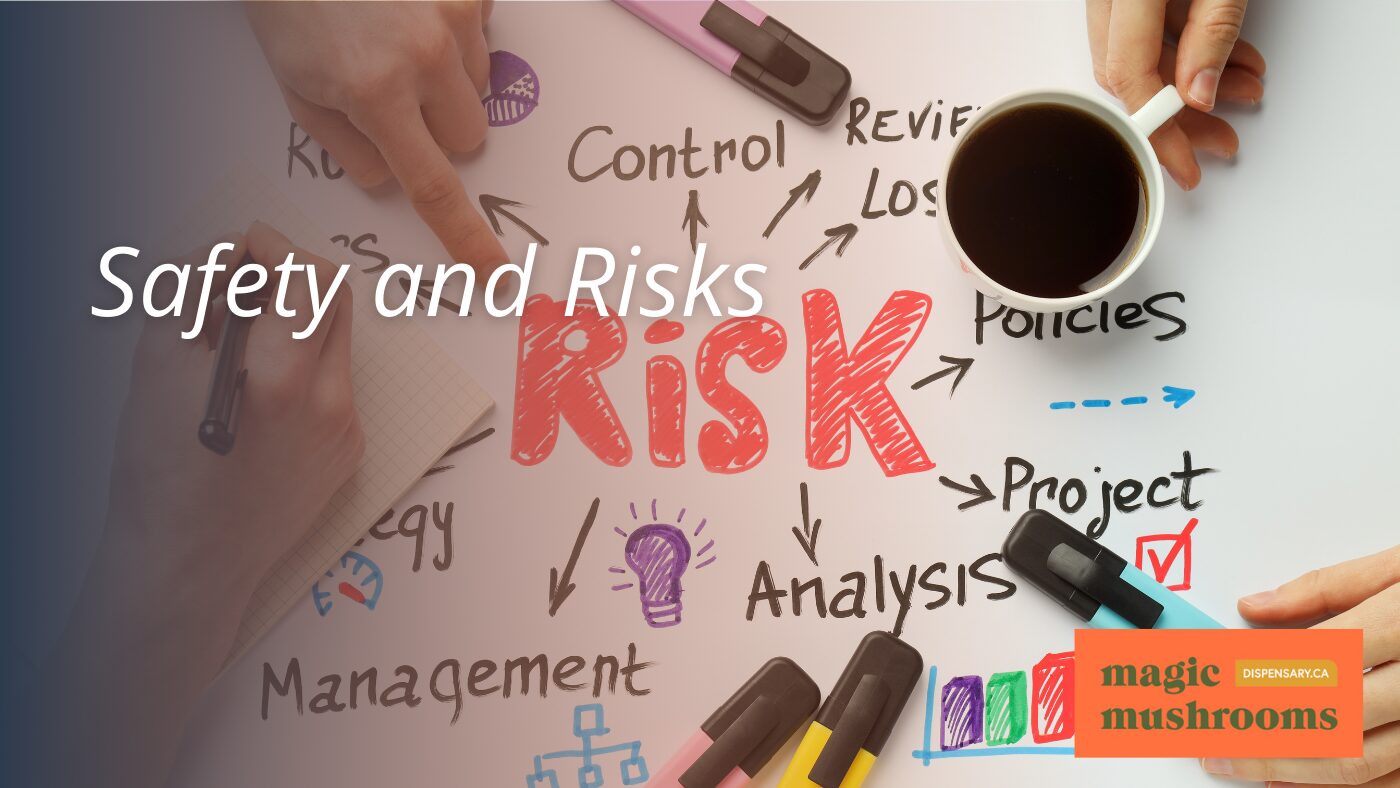
Understanding the safety and risks associated with the use of magic mushrooms is essential for ensuring a responsible and informed experience. In Argentina, where the cultural roots of magic mushroom usage go deep, the psychoactive properties of these fungi, primarily due to psilocybin and psilocin, can lead to profound changes in perception, mood, and thought. Users often report experiencing hallucinations and an altered state of consciousness, which, while considered enlightening by some, can pose psychological risks. These include the potential for experiencing intense emotional distress, anxiety, and, in rare cases, enduring psychological disorders.
Moreover, the physical risks include consuming misidentified mushroom species, some of which might be toxic. This misidentification can lead to profound health implications, including potentially fatal poisonings. Allergic reactions are also a concern, as individuals may react differently to these fungi. Additionally, interactions with other medications can alter the effects of psilocybin, leading to unforeseen complications.
To mitigate these risks, several safety measures are recommended. Beginners are advised to start with low doses to gauge their tolerance. The presence of a sober, experienced trip sitter can provide guidance and help manage any adverse reactions that occur during the experience. Ensuring the setting is safe and comfortable is also critical, as a familiar environment can help maintain a calm and controlled experience. By adhering to these guidelines, users can better navigate the complexities of magic mushroom use, preserving their health and the cultural integrity of this ancient practice in Argentina.
Future Research Directions
Exploring Argentina’s magic mushrooms’ therapeutic potential and cultural implications frequently emerges as a promising avenue for future research. As recent studies begin to recognize the profound impact these fungi could have on mental health and neurological disorders, the need to investigate their bioactive compounds further becomes apparent. Research into these compounds can provide valuable insights into how magic mushrooms can be incorporated into therapeutic practices, potentially leading to innovations in psychological treatments and wellness therapies.
Additionally, the historical use of these mushrooms in indigenous practices offers a rich field for anthropological and ethnobotanical studies. Understanding the traditional contexts in which these mushrooms have been used can illuminate the cultural dimensions of their consumption, which is crucial for appreciating their significance beyond mere biochemical properties. This exploration could also assist in preserving indigenous knowledge, which is often at risk of being lost amidst modernization and cultural assimilation.
The biodiversity and distribution of magic mushrooms in Argentina represent another critical research direction. Mapping and cataloging the various species found across different regions could aid conservation efforts and sustainable harvesting, ensuring these natural resources are protected for future generations. Furthermore, studying traditional cultivation methods can reveal sustainable practices that might be applied in modern agriculture.
Cultural Festivals and Events
While examining magic mushrooms’ historical and therapeutic uses, it is equally important to explore how Argentina’s cultural festivals and events celebrate these traditions through various expressions of art and community gatherings. Argentina’s vibrant cultural landscape provides a fertile ground for commemorating its rich heritage, which includes the indigenous use of natural elements like magic mushrooms in spiritual and healing ceremonies.
Cultural festivals and events across the country often feature traditional music, dance, and visual arts that pay homage to Argentina’s diverse cultural roots. These gatherings display artistic talent and serve as educational platforms for sharing the historical significance of practices, including the ceremonial use of magic mushrooms among indigenous communities. Festivals such as the National Folklore Festival in Cosquín are essential in preserving these traditions by showcasing folk music and dance and narrating Argentine identity stories.
Similarly, the global allure of Buenos Aires’ Tango festivals highlights the passion and elegance of a dance that captivates audiences worldwide, providing insight into the urban culture of Argentina. These festivals and indigenous celebrations like Pachamama Day emphasize the deep connection between the people, their land, and their ancestors. Pachamama Day, in particular, reflects a profound respect for the earth—a core element in Indigenous rituals that often includes using psychoactive plants to foster a communal sense of unity and understanding.
These cultural expressions, rich in history and emotion, not only entertain but also educate, connecting the past with the present while celebrating the enduring spirit of the Argentine people.
Frequently Asked Questions
Is Gymnopilus Aeruginosus Psychedelic?
Gymnopilus aeruginosus, a mushroom species found in various regions, is occasionally reported to have psychoactive effects. However, its classification as a psychedelic mushroom has yet to be definitively established. The species is part of the Gymnopilus genus, which includes several known psychedelic species, but the psychoactive properties of Gymnopilus aeruginosus specifically require further scientific validation. Individuals considering its use for psychedelic purposes should proceed with caution due to the lack of extensive research.
What Is the Name of the Sacred Mushroom?
The sacred mushroom, referred to locally as ‘Derrumbe,’ holds significant cultural and historical value in Argentina. Indigenous communities have utilized this mushroom for centuries in spiritual ceremonies and healing rituals, emphasizing its deep-rooted connection to traditional practices. The name ‘Derrumbe’ itself is a key to understanding the cultural heritage and the spiritual dimensions that characterize the use of this natural element within various local rituals.
Is Gymnopilus Junonius Edible?
Gymnopilus junonius, commonly known as Laughing Gym, is not recommended for consumption due to its potentially toxic properties. This fungus contains psychoactive substances like psilocybin and psilocin, which can induce hallucinogenic effects. However, consumption can also lead to adverse reactions such as gastrointestinal distress and nausea. It is essential to accurately identify this mushroom to avoid health risks, as its consumption for recreational purposes should be approached with caution.
Are All Panaeolus Hallucinogenic?
Not all Panaeolus mushrooms weave the enigmatic tapestry of hallucination. Among the 77 recognized species in the genus, only a subset, approximately 20, are known for their psychoactive properties. These hallucinogenic members contain compounds such as psilocybin, which alter perception and consciousness. Most Panaeolus species do not possess these psychedelic traits, making them non-hallucinogenic and distinguishing them notably in biochemical composition and effect.
Conclusion
In the verdant landscapes of Argentina, magic mushrooms weave a tapestry enriched with historical depth and spiritual vibrancy. This exploration into their cultural significance uncovers a complex interplay of tradition and modernity. As research progresses, these enigmatic fungi offer profound insights into the human psyche and societal rituals, promising new understanding domains. They hold not only a place in ancient ceremonies but also in the potential enlightenment of future generations.
Buying Microdosing Mushrooms Online in Canada
Are you an avid microdoser or looking to venture into the art of microdosing? Working with a reliable, trustworthy shrooms dispensary is paramount in becoming a better version of yourself. Magic Mushroom Dispensary prides itself on its comprehensive collection of top-notch microdosing products, psilocybin books, excellent customer service, and fast, discreet shipping. Visit our online shop today and enjoy low prices and free shipping for orders above $99.
Originally posted on June 30, 2024 @ 10:13 am
